- Share
- Like
- Tweet
- Digg
- Tumblr
- VKontakte
- Love This
- Odnoklassniki
- Meneame
- Blogger
- Amazon
- Yahoo Mail
- Gmail
- AOL
- Newsvine
- HackerNews
- Evernote
- MySpace
- Mail.ru
- Viadeo
- Line
- Comments
- SMS
- Viber
- Telegram
- Subscribe
- Skype
- Facebook Messenger
- Kakao
- LiveJournal
- Yammer
- Edgar
- Fintel
- Instapaper
- Copy Link
The Christchurch Airport Regional Terminal building was designed by BVN Donovan Hill & Jasmax to create a completely separate identity from the recently expanded Christchurch Domestic and International terminals. The new terminal was commissioned by Air New Zealand, the major user of the terminal although the terminal actually merges with the main terminal building which is a multi-user facility.
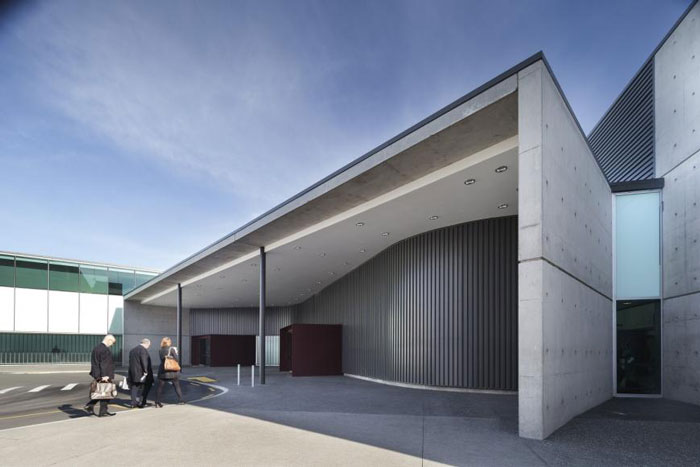
Image © John Gollings
The functional brief was to provide the terminal hub for regional air travel throughout the South Island, whilst the aspirational brief was to design a space that creates a memorable and emblematic New Zealand space as this terminal is the staging point for many international visitors to the major destinations of the South Island.
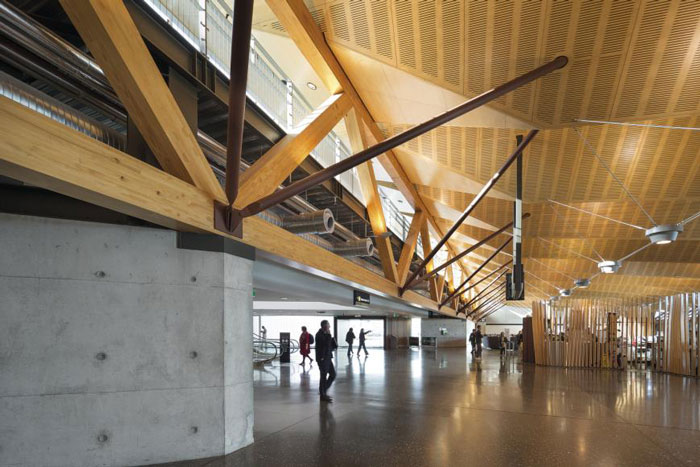
Image © John Gollings
On the exterior the building was deliberately kept neutral to contrast against the warm wood tones of the interior. Airside is designed as a refined abstracted wing which sits quietly but in affinity with the prop jet aesthetic of the regional aircraft fleet.
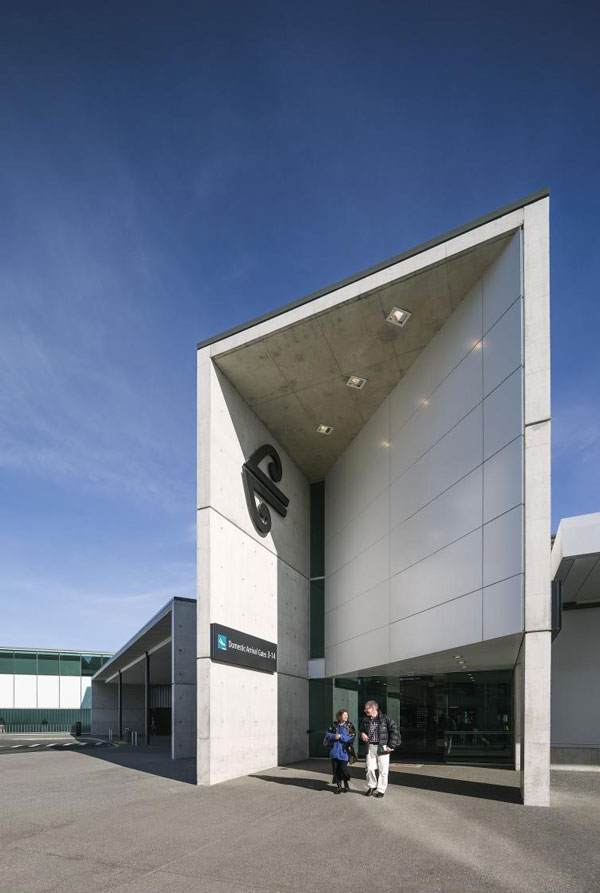
Image © John Gollings
The concept of the design abstracts natural forms related to the South Island. The interesting folded structure of the ceiling was inspired by the Southern Alps which are the backdrop for the airport.

Image © John Gollings
The interior features large timber trusses that trace back their origins to old timber trussed bridges found in the South Island. The more organic shapes found in the seating and cafe take inspiration from the natural shapes of the coastline as the forest meets the ocean.
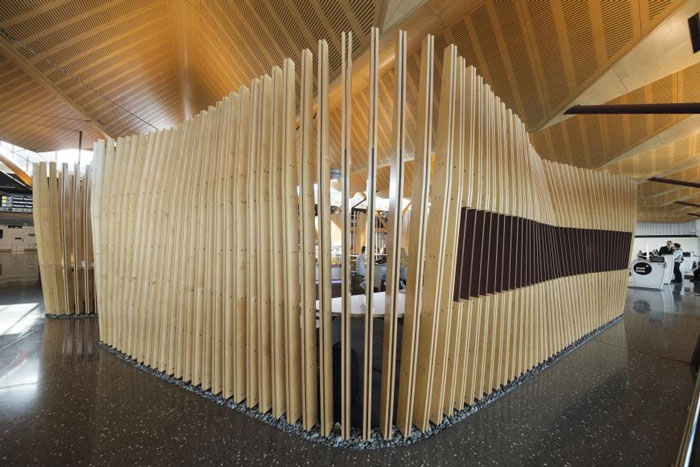
Image © John Gollings
The trusses functionally provide a dedicated access pathway for goods to be taken from the ground level loading dock at the end of the building to the upper level domestic terminal retail area. They also provide high level north glazing to ensure direct sun can penetrate deeply into the terminal.
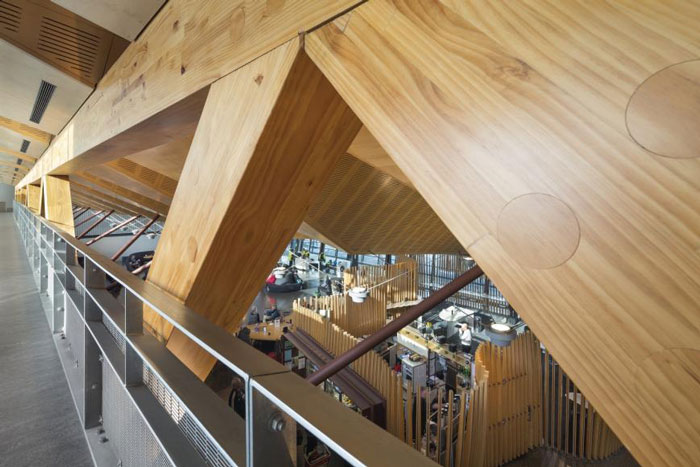
Image © John Gollings
Arrival and departure passenger flows are separated by a cafe and an Air New Zealand “Koru-express” club. Escalators link transit passengers with the regional and international terminals.
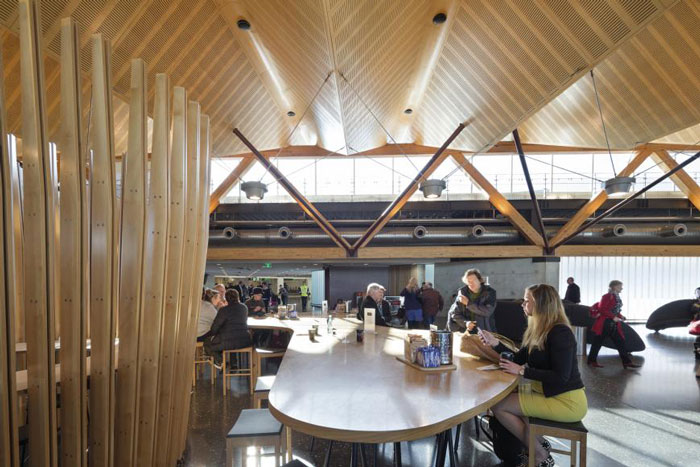
Image © John Gollings
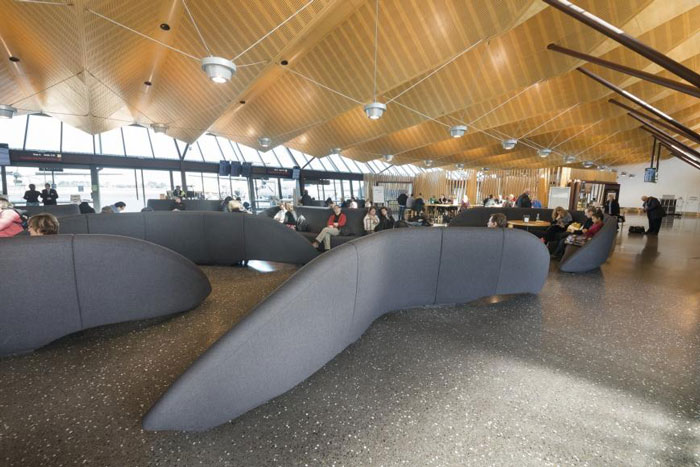
Image © John Gollings
Entry to the terminal is signified by the concrete arch which visually delineates the domestic and regional terminals and by the steel shroud doors within the large concrete portal. Together with the concrete wall enclosing the service dock, these elements make a discrete expression of the regional terminal quite different from the remainder of the airport, whilst being related in form and materiality to it.
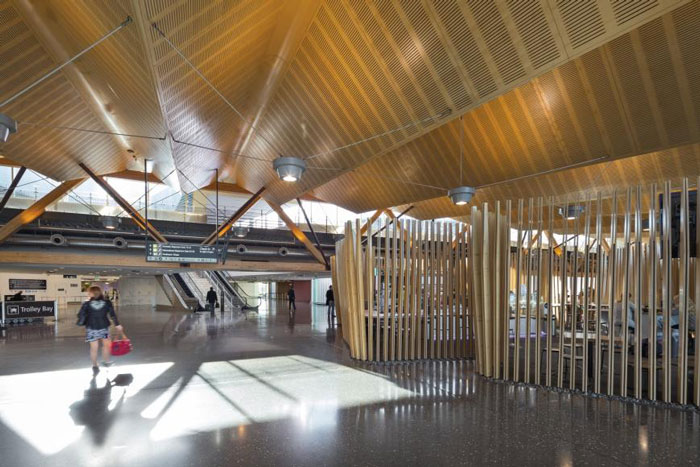
Image © John Gollings
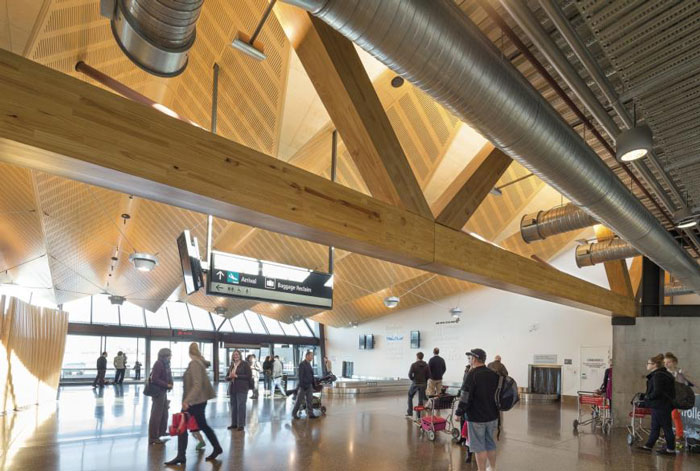
Image © John Gollings
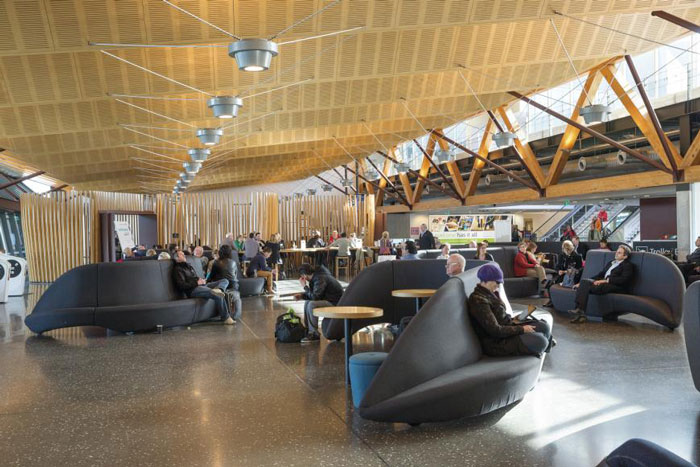
Image © John Gollings
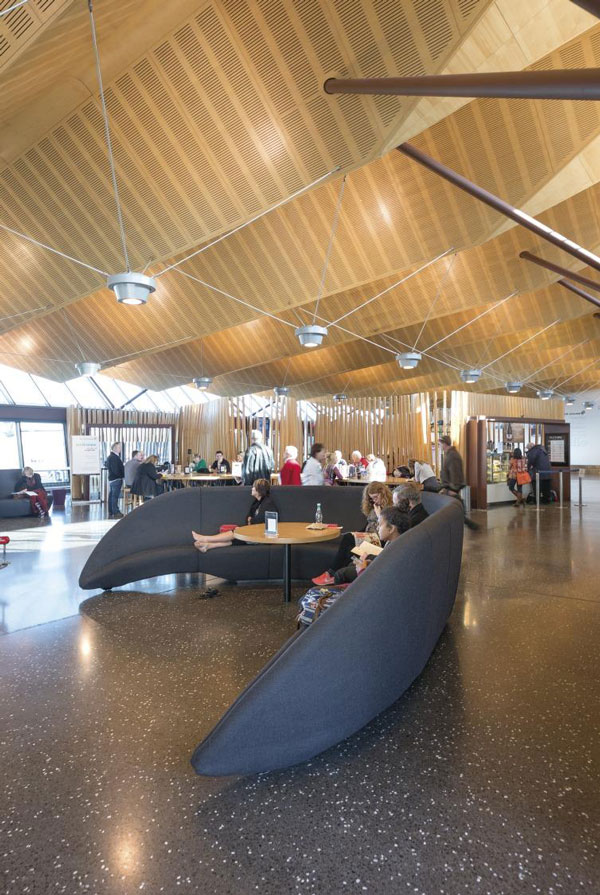
Image © John Gollings
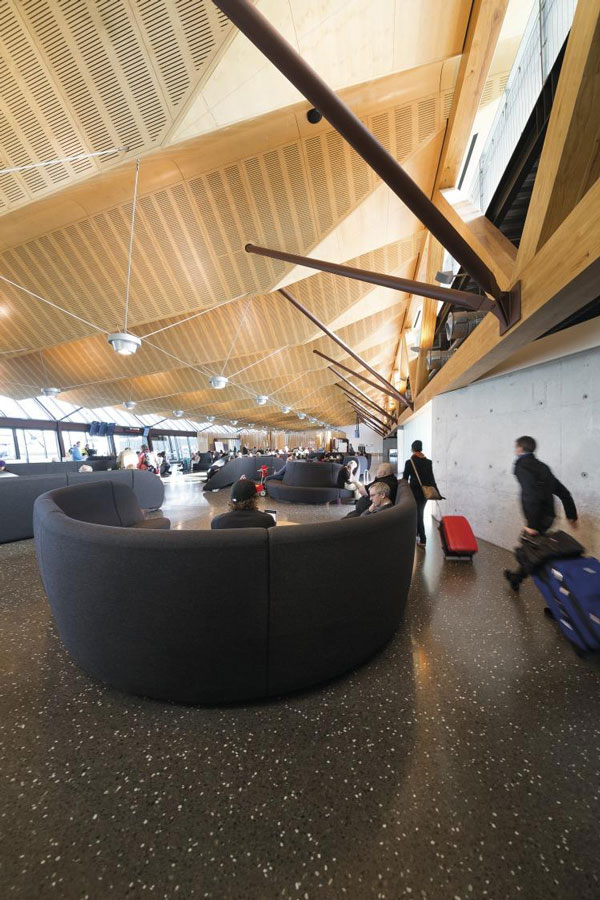
Image © John Gollings
